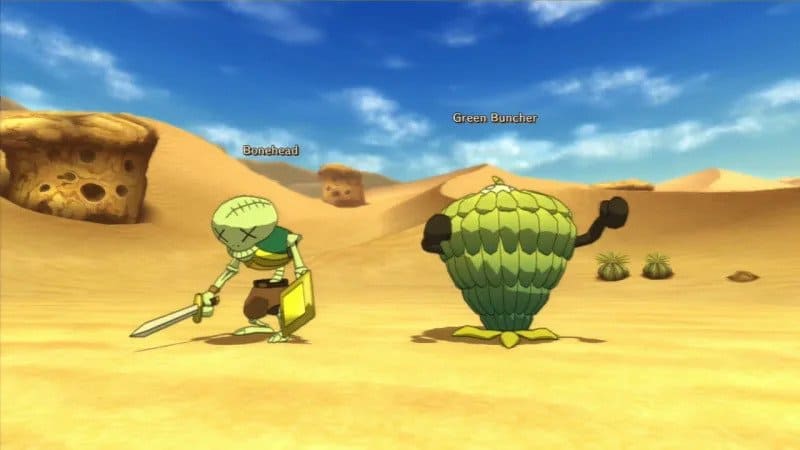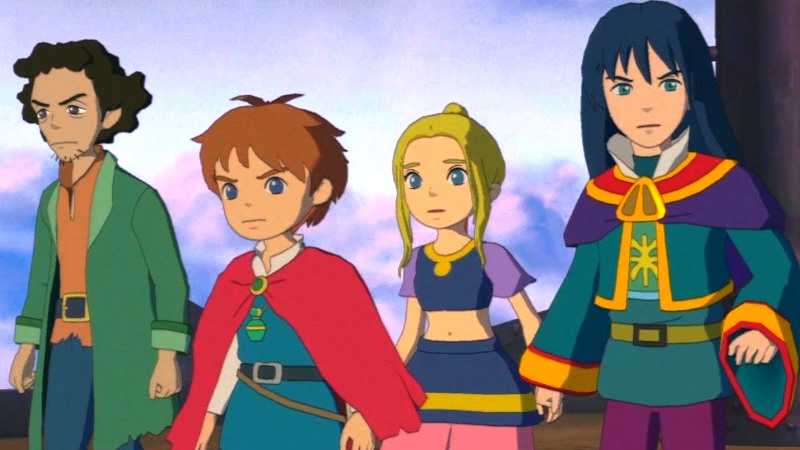Ni No Kuni: Wrath of the White Witch was a stunning PS3 release in 2013. Its artwork was provided by none other than the legendary animation studio, Studio Ghibli. Ni No Kuni evoked Studio Ghibli’s unmistakable charm through its incredible world design. This is the main reason why it received critical acclaim on release. Now that Ni No Kuni has been remastered on PS4 with nothing in addition to enhanced graphics and more frames per second, I feel it necessary to dig deeper than its pretty exterior, to reveal the ugliness which has been overlooked for far too long.
A Quest Begun…
We’ll begin with the story. Ni No Kuni follows Oliver, a young boy who journeys into the ‘other world’. Oliver undertakes this journey to save his mother from a tragic accident, however, it becomes much more than a personal vendetta. On realising his abilities, Oliver strives to save both the ‘other world’ and his home town from the machinations of the Dark Djinn. Though simplistic, I like the story, especially when viewing it allegorically as a child’s use of imaginative escapism to cope with loss. It’s just a shame that the fundamentals of Ni No Kuni’s story lead to oversimplified tedium when translated into gameplay.
In Ni No Kuni, saving the world translates into mindless fetch quests. You save the world by locating someone with a broken heart, tracking down someone with heart to spare, then returning to the brokenhearted individual with the piece of heart. This results in ‘gameplay’ of running from one place to another, back again and smashing X through repetitive dialogue. No thought required.
Combat and Metamorphosis
Despite this mundanity being a core aspect of Ni No Kuni’s gameplay, it’s not what the game is known for. Ni No Kuni is instead known for its combat, which plays out like real-time Pokémon. When you encounter the game’s version of a Pokémon – a familiar – you must battle. Battles involve scrabbling up to an enemy, successively hitting attack and occasionally throwing in a special move.
This sounds intuitive enough until you realise that instead of buttons being assigned to these actions, there are on-screen speech bubbles that you cycle through by tapping the triggers. It’s unwieldy, clumsy and diverts your attention away from what should be the primary focus: your character and the enemy.
You’ll be spending a long time tapping those triggers. Ni No Kuni demands copious grinding due to some steep difficulty curves, but mainly because of its version of Pokémon evolution, dubbed metamorphosis. Unlike Pokémon, where evolution is generally triggered by reaching a certain level which remains the same after transforming, familiars drop to level one after metamorphosis.
Any hopes of linear progression are thus replaced with the tedium of grinding the familiar to an area appropriate level. Additionally, only one should metamorphose at a time to avoid creating a team unable to enter combat. This would result in even more grinding!
Wait, Who Designed This Again?
Ni No Kuni’s metamorphosis does have one positive, however, which is that every familiar has three forms. Time is thus never wasted on leveling one without competitive potential. Finding one that you want to have in your party, though, is a different story. The designs are bland, to say the least. The creatures and…objects, don’t even look like they would inhabit the same universe. This is painfully jarring when compared to the world design and cutscenes, which are so beautifully crafted they could have been pulled from a Studio Ghibli film.
The familiar’s poor visual design couples needless differential complexity. Each familiar has an element, such as fire, which is strong/weak against the others. This would have been sufficient, but they also have a celestial sign. This acts as a second layer of rock, paper, and scissors. They can equip weapons and armour. Their favourite foods buff their stats. In a game with visually appealing team options and satisfying combat, multiple layers are more than welcome, however, Ni No Kuni does not fall into this category. I resorted to picking my team from a suggested list forum.
More Problems with Combat and the White Witch
This leads me to return to the combat, and what better place to examine it than the final battle. Ni No Kuni delivers a rightfully challenging final boss with the White Witch. If this game had intuitive controls and AI mechanics, I would have had nothing but praise for this battle. But alas, as previously mentioned, the controls are unwieldy.
It’s too easy to select a special move instead of defending in the heat of battle, which is especially problematic when fighting something that regularly deals crippling damage by one attack alone. On top of this, Ni No Kuni has another layer of control unusable throughout and for the final battle. This is the tactics system, whereby you direct your party members to act defensively or ‘keep us healthy’, for example.
You would think that the latter tactic would be particularly helpful in the final battle, but it results in the individual spamming the highest mana healing moves until they’re a useless, empty vessel. The only way I managed my party was with the ‘all-out-attack’ and ‘all-out-defence’ directives. Though, defending on cue was never guaranteed. This resulted in many unwarranted, frustrating deaths.
The White Witch looks spectacular and is (if the controls and mechanics were any good) pleasingly hard-hitting. But, her inclusion in the title and as the final boss makes absolutely no sense. As you may recall, the story of Ni No Kuni revolves around Oliver’s journey, which culminates in him saving the worlds from the Dark Djinn. The White Witch isn’t mentioned until the game has reached its conclusion. The White Witch battle is effectively DLC, and there is nothing to do before but grind. I highly recommend that you avoid any of this ‘post-game’ content.
The Characterless Characters
We’ve come this far, and I haven’t even mentioned Ni No Kuni’s characters. Let me introduce the party members: Esther, daughter of a Great Sage whose primary role is to argue with Swaine, an irritable thief who just so happens to be the older brother of a prince because this is a JRPG and JRPGs need these all too obvious revelations. I guess it was wishful thinking to hope for likable or well-developed characters, considering the nature of the story.
But how could I forget the Ni No Kuni fan favourite: Drippy, High Lord of the Fairies? How could I indeed? He’s unique because he’s always joking and speaks in a thick Welsh accent. There are moments when Drippy’s quips provide a source of amusement, but they are few and far between in a game that can span over 50 hours! Ultimately, his entire presentation is a translucent attempt at making the character appear to have more charm and depth than the writing could hope to achieve.
And the Verdict is…
Ni No Kuni: Wrath of the White Witch is an incredibly flawed game. It creatively borrows several features from pre-existing JRPGs, but through over-complication and poor execution, it fails to build on, let alone replicate these ideas. If you’re a JRPG fanatic, slightly enhanced visuals and performance may be enough for you. For me, this is nowhere near enough. They should be ashamed to call this a remaster. My recommendation is that you do not buy this game. Watch a Studio Ghibli film instead.
- The David Cage Experience: Fahrenheit and Heavy Rain - October 1, 2020
- The Best Innovations in Indie Games - December 13, 2019
- Trophies and Achievements: Why They’re a Problem - November 2, 2019



